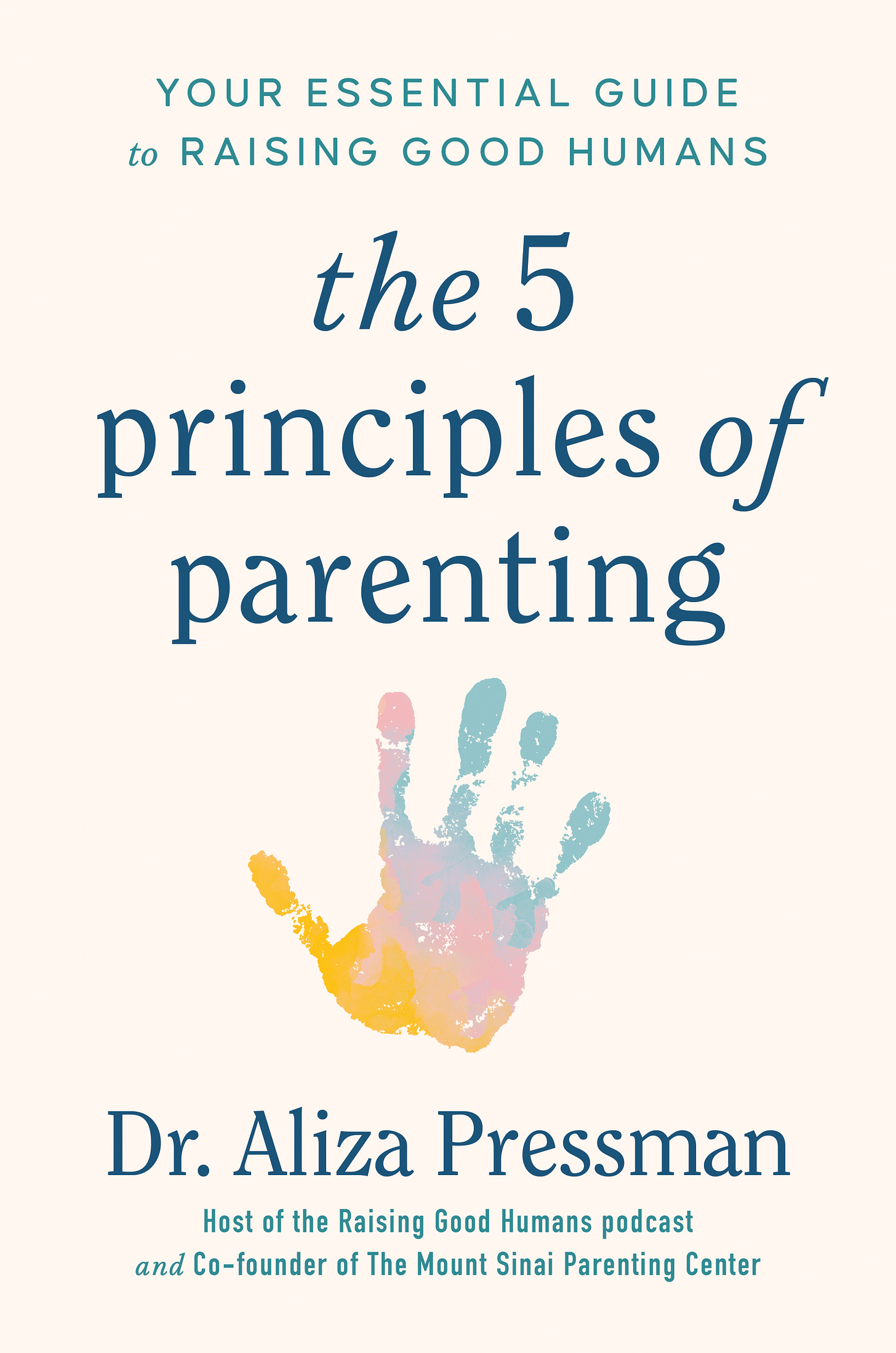What Tools Can You Use to Live the Emotional Life you Want to Live?
Helping us all learn to shift
Thanks for reading Raising Good Humans on Substack! My first book, The Five Principles of Parenting: Your Essential Guide to Raising Good Humans is now available for purchase here.

This week, I have the privilege of speaking with Professor Ethan Kross, author of the new book, Shift, on the podcast. It seems obvious that any discussion about emotions would be super relevant to all of us, but this one was particularly filled with practical tools that we can start using today. There is so much science to support these tools - if we only know how to use them.
Professor Kross uses the metaphor of emotions as software packages that are activated in specific situations, influencing our thoughts, feelings, and behaviors. They serve a crucial function in helping us respond optimally to our environment, and while negative emotions like anger and anxiety can be uncomfortable, they are not inherently bad. As we discussed in the episode, and have talked about before, when experienced in the right proportions, negative emotions can even be beneficial. Anger, for example, can alert us to violations of our values, and motivate us to take corrective action. Anxiety can signal the need for focus and preparation. Pain can help us to protect ourselves.
Why does this acceptance feel like a relief? Well, part of it is because the current culture of parenting has made many of us afraid of allowing our children to experience any distress. But, it is exactly the opposite. It is crucial to recognize that experiencing negative emotions is a normal part of life. Striving to eliminate all negative emotions is not only unrealistic but also undesirable. Instead of suppressing or avoiding these emotions, we can help our children (and ourselves) to accept them as natural, and explore the valuable information they provide.
“It is so scary for parents in the current culture of parenting to allow what is perceived as a “negative” emotion to occur in their kids.” Dr. Aliza Pressman
So, where do we start? As Professor Kross explains, emotional fitness, like physical fitness, requires practice and effort. Just as we learn to use different exercises to achieve our physical fitness goals, we can learn to use various tools to manage our emotions effectively. Here are a few of the tools from the episode, but for more, please check out Shift.
Reframing Negative Emotions
One of the most powerful tools for managing emotions is reframing. By changing the way we think about our emotions, we can shift their intensity and duration. For example, instead of viewing anxiety as a sign of weakness, we can reframe it as a cue to focus and prepare. This simple shift in perspective can transform a potentially debilitating emotion into a source of motivation.
Distraction and Restoration
While chronic avoidance is not healthy, strategic distraction can be a valuable tool for emotion regulation. When emotions are running high, taking a break and engaging in a distracting activity can provide an opportunity to cool down and gain perspective. This can be particularly helpful for children who are still developing their emotional coping skills.
Sensory Activation - Music and Touch
Music and touch are powerful tools for managing emotions because they directly influence our senses. Music can uplift or calm us (or even help us work through the sadness we need to experience), while affectionate touch releases stress-fighting chemicals, and provides a sense of comfort and connection. These sensory experiences can quickly and effectively shift our emotional state, helping us regulate our emotions in the moment.
Distracted Self-Talk
Distanced self-talk is a tool to manage emotions by giving yourself advice as if you were talking to someone else. It is easier to give advice to others, and using your name or the pronoun "you" while coaching yourself can create emotional distance, and make the advice more effective. By shifting perspective and speaking to yourself kindly, you can gain emotional control and navigate challenging situations.
Set The Culture
Parents play a crucial role in shaping the emotional culture of the home. By modeling healthy emotional expression, and providing children with the tools and language to manage their emotions, we can create an environment that fosters emotional well-being. Do we allow space for crying? Do we brush ourselves up and try again? Do we treat each other with kindness? Establishing the norms is up to us, and always possible.
Another thing to consider:
While it might seem counterintuitive, people actually enjoy a variety of emotional states, even those we typically consider negative. Some people want to feel positive and optimistic all of the time. Others prefer an even keel without too much change. Some people thrive on excitement, and actively seek out thrilling experiences, even if they involve fear or risk. Others find comfort in sadness or nostalgia, appreciating the depth and complexity of these emotions. Ultimately, individual preferences for emotional states are diverse. We can’t judge the preferences of others, but instead, learn to understand those around us. With information, we can adjust how we respond, or what we expect from those we love. That is an opportunity!
“I think the question that you want to ask yourself, and the question you want to get your kids to ask themselves, is ‘When is the emotion they are experiencing no longer serving them well, and actually undermining them?’” Professor Ethan Kross
Like all things in parenting, let’s end by remembering that there is no one-size-fits-all approach to emotion regulation, or anything else for that matter. What works for one family may not work for another. What works for one child, may not work for another child in the same family! There is trial and error in all of this, and there are plenty of opportunities to repair. That is the reframe we all need in the difficult moments.
A quick reminder to buy my first book, The Five Principles of Parenting, and write a review from wherever you order. Reviews really help to get the book noticed, and to spread the word. Please especially rate and review any books purchased on Amazon (it shockingly really, really matters!). Also, when you receive the book, snap a quick pic with it and post on social media. Share one thing you love about it and help me to get more copies into the hands of parents in your community. Tell a friend about the book, or about something you found helpful in the book. Parents look to each other for advice, and I’d love to be a part of the support you pass on to your loved ones.





